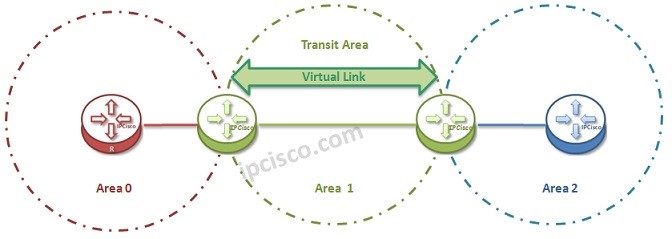- COURSES
- SPECIALS
- BLOG
- MEMBERS
- SHOP
- ABOUT
- ENROLL HERE

We have learned key lessons of OSPF in this CCNP Encore Course. Here, we will talked about the remainning main lessons of OSPF like OSPF Virtual Links. So, what are these important points of OSFP. These lessons are given below:
Let’s talk about these parts one by one. If you would like to learn How to Configure OSPF on Cisco Routers, you can check the releted lesson also.
Table of Contents
Router ID is an important term for OSPF Operations. Every router has to have a unique Router ID in the OSPF Topology. So, generally Router ID is manually configured on all OSPF Routers. If this is not done, the highest router interface IP address is selected as Router ID.
Virtual Links are used for connecting areas to the Backbone Area, that is not directly connected to the Backbone Area. For this job, there is one Transit Area that helps to connect the area to Backbone Area. Both end of the Transit Area is configured with Virtual Links. And this Area that will ne connect by Virtual Links, can not be a Stub Area.
In the above picture, Area 1 is the Transit Area. And the Virtual Link will be configured between R2 and R3 routers to connect Area 2 to the Backbone Area, Area 0.
This is a temporary solution to connect one Area to the Backbone Area. So it is not recommended to use this solution as a Permanent solution.
There are also different Authentication mechanisms in OSPF like in other Routing Protocols. This OSPF Authentication mechanisms are different in both OSPFv2 and OSPFv3. In OSPFv2 Authentication can be done with three ways. These Authentication mechanisms are :


Leave a Reply